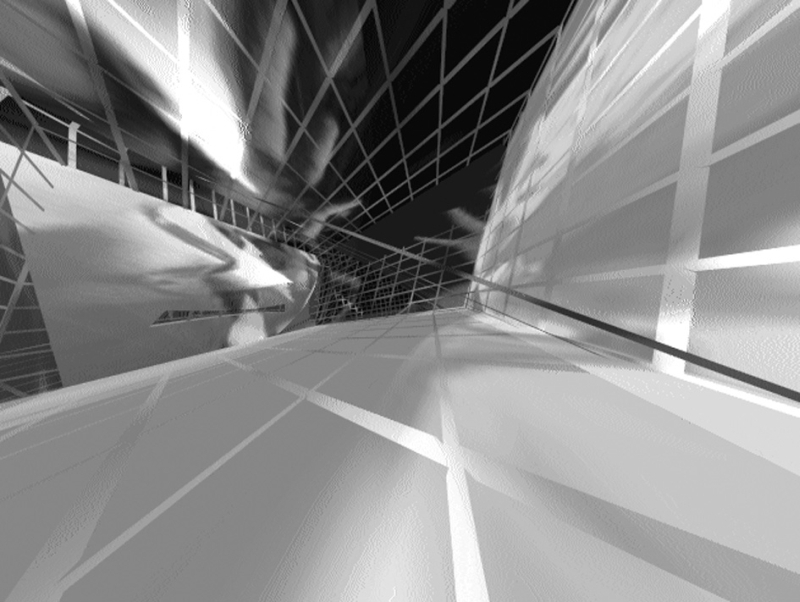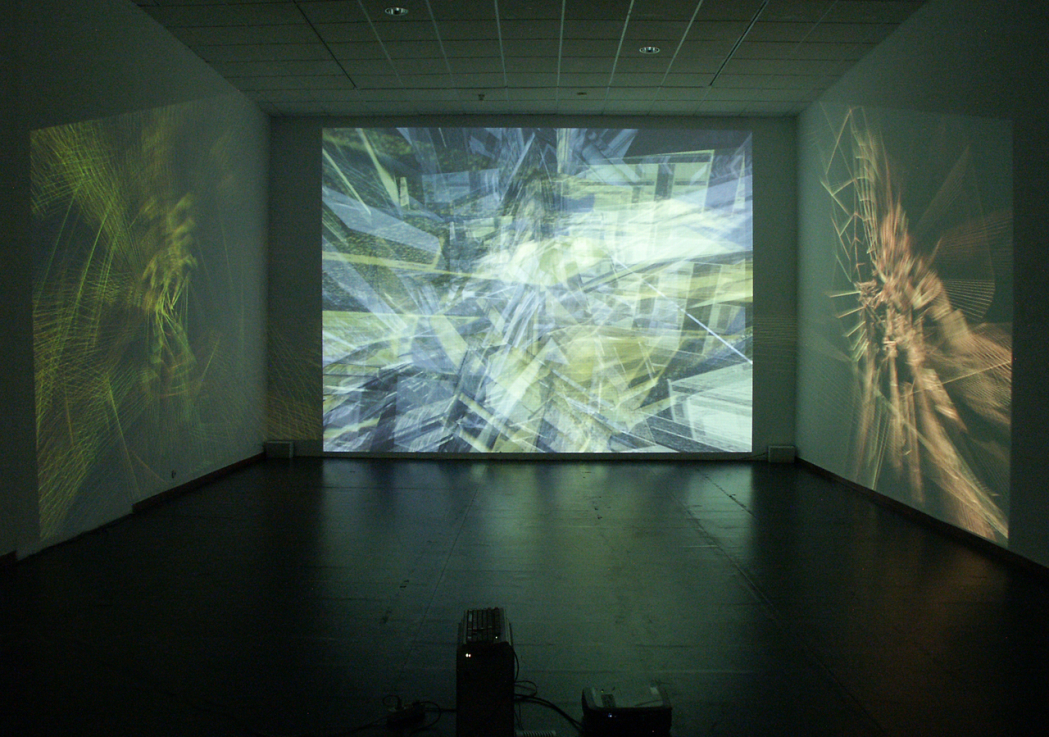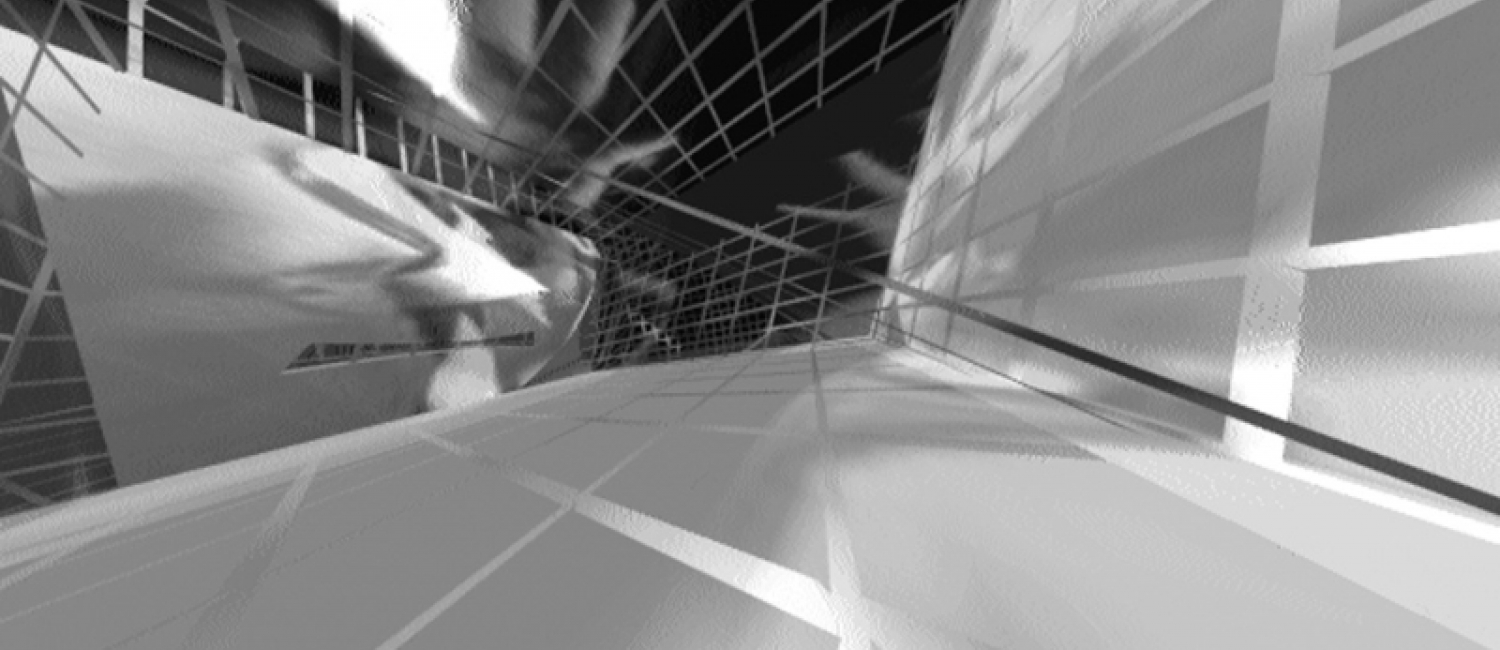The familiar space of the Ludwig Museum’s Project Room is being transformed through an interactive show. Six projectors placed in the room transpose the space by means of pre-designed images applying 3D effects and light. Projected onto the walls, the ceiling and the floor, moving images modify the nature of the space, creating a partially or entirely new spatial character. A computer with multi-channel hardware controls the projection’s direction, dimension and rhythm, synchronising the six projectors on the basis of a given script.
With the help of a user-friendly program menu, the visitors are able not only to prolong the originally two-minute “programme time”, but are provided with the opportunity to manipulate and diversify the space, generating increasing metamorphoses, space-transformations and character. The “effect” is assisted, enhanced and potentially reinterpreted by sound effects synchronised with the movements and the generated spaces.
Each element formulating the vision has a defined individual character: the material, the form, the colour, the texture, and first and foremost, the position within the space, are all functions of the projected “image”. The tectonic-static synchronisation of the parts cannot be detected visually; it is as if the visitors were floating weightless in an infinite space continuum. The seemingly chaotic visual composition of the highly differentiated parts is not the result of geometrical forms put together additively (constructively); on the contrary, it comes about through the violent breaking open and dispersion of the homogeneous “primordial form” that encompasses the largest volume possible on the given surface. This creative act may be metaphorically described as a “Big Bang”, i.e., the explosive transformation of an undifferentiated mass of extraordinary density into a field consisting of unique parts, which expands in every direction.
This exhibition presents a system in which it is possible to follow how links are defined and solved between the planar and spatial forms of different quality, and in which there is a modular relationship between the “embodied” lines and surfaces, and the bodies. Transitory forms, masks, lights, etc. foster the establishment of relationships between the constituents. The correlation of various elements, structures and architectures allows for the creation of combinatory forms, sparing any loss of substance. These links yield ever newer combinatorial forms, opening the way for both repetitive and non-repetitive permutation. The formations and elements’ modular linkage and rupture (an interval that does not belong to either part, yet that defines them both) launch an infinite chain that can only be solved and developed further by way of a logical process. Each individual visual programme serves to correlate these constituents, which are eventually realised in the produced sight.
Beyond the varied and changing spectacle, the transformation of the space raises perennial questions like, how is it possible to alter a given space by means of optical devices? What kind of psychological effect may be evoked by the continuous change of space? How do visitors perceive moving images in the context of the space? And is natural science right stating that the analysis of a (perfect) construction also produces (perfect) applications?
Zoltán Prosek


